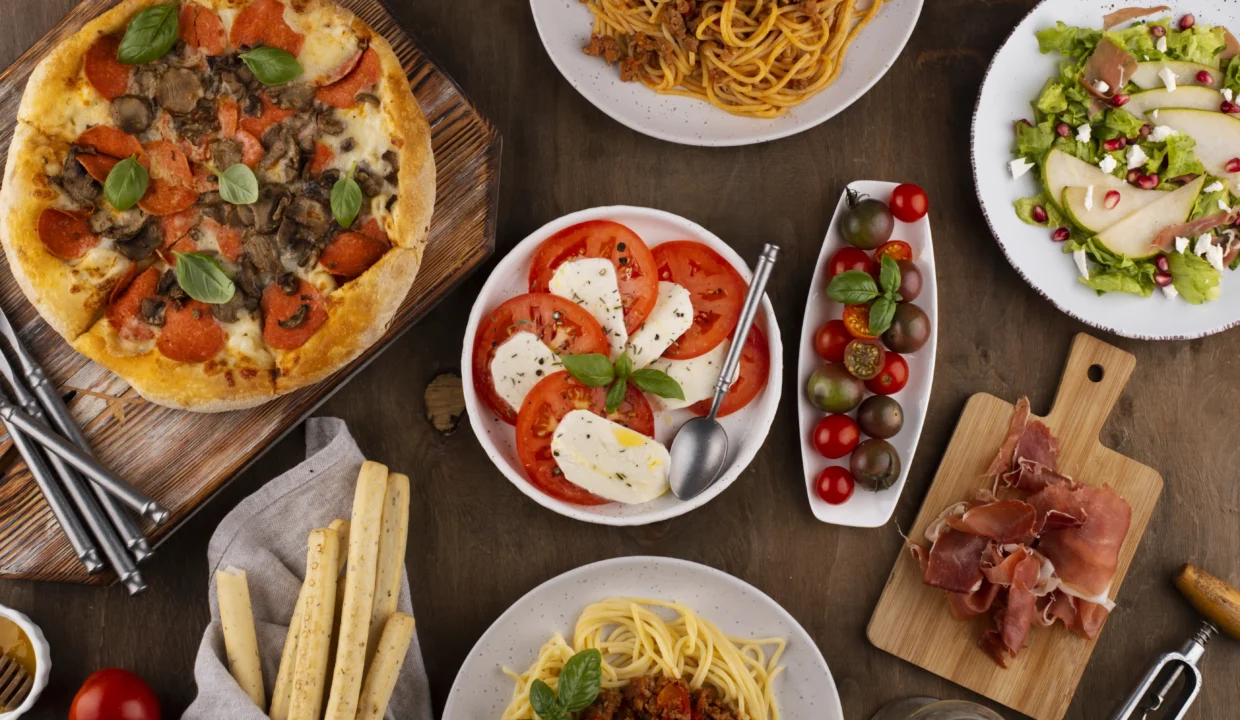A Taste of Tuscany: Dinner, Dessert and Wine Marvels in Italy’s Culinary Paradise
The Allure of the Tuscan Table

Tuscany isn’t just another stop on Italy’s map—it’s an immersive journey into one of the world’s most soul-satisfying culinary cultures. Picture this: a sun-soaked landscape of rolling vineyards, rustic farmhouses, and medieval towns that look like they’re straight out of a movie set. But beyond the postcard-perfect scenery, there’s a deeper magic at play. The real beauty of Tuscany lies in its food—unpretentious, deeply rooted in tradition, and packed with flavor that whispers of the region’s rich history.
At a typical Tuscan table, there’s no rush. Meals are a slow, sensory ritual meant to be savored and shared. Locals believe in letting ingredients shine naturally—whether it’s a sun-ripened tomato, a slab of pecorino cheese, or a drizzle of green-gold olive oil. Every dish is part of a living story passed down through generations, where recipes are learned by heart, not by book.
And let’s talk about ambiance. Eating in Tuscany often means dining outdoors under vine-draped pergolas, surrounded by laughter, clinking glasses, and the scent of rosemary and garlic in the air. Whether it’s a family-run trattoria or a countryside agriturismo, the warmth and authenticity of Tuscan hospitality makes every meal memorable.
Why Tuscany is a Food Lover’s Dream

Tuscany is heaven for anyone who lives to eat. It offers a unique blend of rustic simplicity and culinary sophistication. What makes it so special? It’s the way Tuscan food manages to feel both hearty and refined, deeply traditional yet always evolving. It’s food that speaks directly to the senses, without overcomplicating things.
This is a region where every ingredient is celebrated. You’ll find locals who wax poetic about the right bean for a soup, or debate the perfect cut for a steak. And the pride is real—Tuscans are fiercely loyal to their regional specialties, from the hearty stews of the Maremma to the seafood dishes of the coast. You’ll hear stories about grandmothers who made pasta from scratch without a recipe, or farmers who know their olive trees like old friends.
Tuscany also excels at creating a full experience around food. There’s the ritual of the aperitivo, the social joy of a long Sunday lunch, and the deep satisfaction of a wine tasting where you hear about the vineyard’s history while standing in the very soil where the grapes grow. It’s not just about eating—it’s about connecting. To the land. To the people. To something timeless and true.
In Tuscany, you don’t just get fed. You get nourished—in body, heart, and soul.
The Foundation of Tuscan Cuisine
Simplicity is the Soul
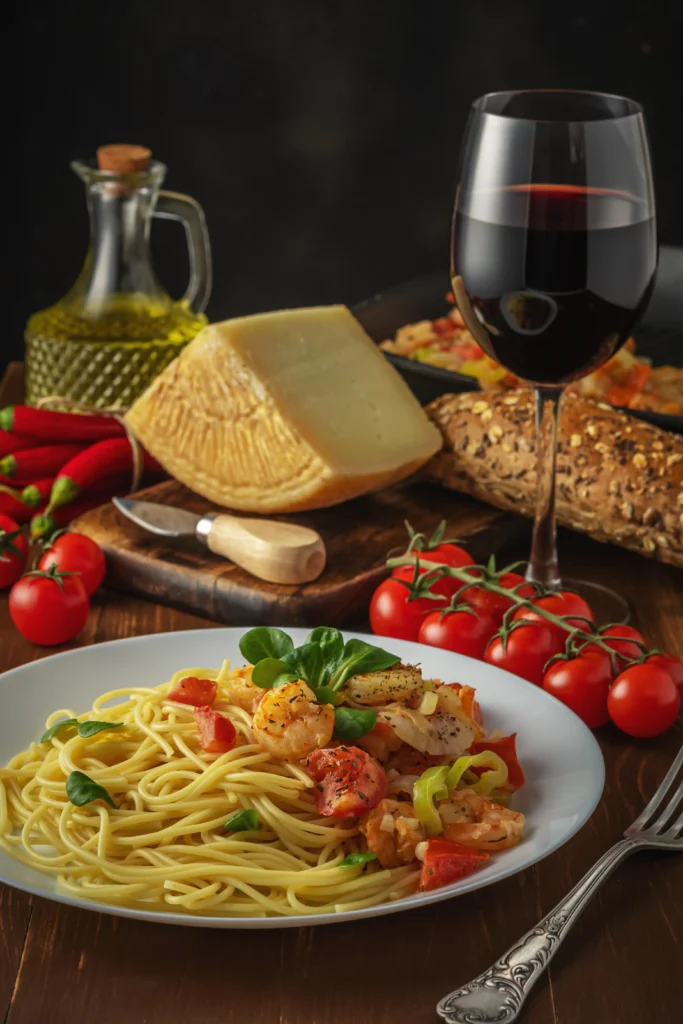
At the core of every unforgettable Tuscan dish is an unwavering belief in the beauty of simplicity. You won’t find overly complex preparations or long ingredient lists here. Instead, Tuscan cuisine is built on the principle that high-quality, locally sourced ingredients speak for themselves—and the cook’s job is to step back and let them shine. It’s a philosophy rooted in peasant cooking, where humble ingredients were transformed into deeply satisfying meals through time-tested techniques and a whole lot of heart.
In Tuscan kitchens, you’re more likely to find a splash of olive oil than a pool of cream, a pinch of salt rather than a flurry of exotic spices. Garlic, rosemary, sage, and black pepper are staples, used with a light hand to enhance, not overpower. The goal is always balance and clarity—flavors that are vivid yet clean, rustic but refined.
This simplicity is more than just a cooking style—it’s a lifestyle. Tuscans have a deep respect for nature’s rhythm, and that means eating what’s in season and what’s grown nearby. Take something like bruschetta: it’s just toasted bread, rubbed with garlic and topped with chopped tomatoes and basil. But when those tomatoes are grown in Tuscan soil and kissed by the Mediterranean sun, and the olive oil is fresh-pressed from the grove next door? It’s absolute magic.
Tuscany teaches us that great cooking doesn’t need to be complicated. It needs to be thoughtful, intentional, and rooted in respect—for ingredients, for tradition, and for the people who gather around the table.
Fresh, Local, and Seasonal
There’s a reason why Tuscan food tastes so alive: it’s deeply connected to the land. In this region, eating local and seasonal isn’t a passing trend—it’s a way of life that’s been honored for centuries. Whether you’re shopping at a village market or dining at a family-run trattoria, you’ll see ingredients that reflect the current season and the geography around you.
In spring, the markets bloom with artichokes, wild asparagus, and fava beans. Summer brings juicy tomatoes, fragrant basil, and sweet peaches. Autumn is a feast of mushrooms, truffles, and chestnuts, while winter is rich with hearty greens like cavolo nero (Tuscan kale) and legumes that fuel warming soups and stews.
Meat and dairy, too, are often sourced from local farms. The famous Chianina cattle, used in the beloved Bistecca alla Fiorentina, are native to the region. Pecorino cheese comes from sheep grazing on Tuscan hillsides. And the eggs used in your fresh pasta? Likely from the chickens scratching around just beyond the garden.
But what truly sets Tuscany apart is how deeply ingrained this seasonal awareness is in the culture. Grandmothers plan meals around what’s ripe that week. Restaurants change their menus frequently to highlight what’s freshest. And producers take pride in their small-batch, artisanal goods—whether it’s hand-rolled pasta, cold-pressed olive oil, or heritage wheat flour.
This local-first mindset also helps preserve the region’s biodiversity and supports sustainable farming. It’s a win for the planet, your taste buds, and your health. So when you eat in Tuscany, you’re not just enjoying incredible flavor—you’re experiencing a living, breathing expression of the land and its rhythms.
Must-Try Traditional Tuscan Dishes
Ribollita – The Quintessential Peasant Soup

Ribollita is more than just soup—it’s a living testament to Tuscany’s roots in la cucina povera, or “poor kitchen,” where frugality met creativity to produce meals that were humble in origin but rich in flavor. The name literally means “reboiled,” which is a nod to its traditional preparation. Leftover vegetable soup from the day before is reheated with chunks of stale bread added in, transforming it into a thick, stew-like dish that warms the soul.
But don’t let its humble origins fool you. When made right, ribollita is a revelation. It’s a layered symphony of earthy vegetables—usually including cannellini beans, carrots, onions, potatoes, and Tuscan kale (cavolo nero)—slow-cooked until everything melds together into something greater than the sum of its parts. The addition of the stale bread not only thickens the soup but also gives it a heartiness that can hold its own against any meat dish.
What makes ribollita truly special is how it captures the Tuscan spirit of zero waste and seasonal eating. It’s often eaten in the colder months, when the body craves something warm and sustaining. And it tastes even better the next day, after the flavors have had time to deepen and settle. Whether you try it at a countryside trattoria or learn to make it in a Tuscan cooking class, ribollita is a dish that wraps you in a comforting hug and reminds you of simpler times.
Bistecca alla Fiorentina – The King of Tuscan Meats
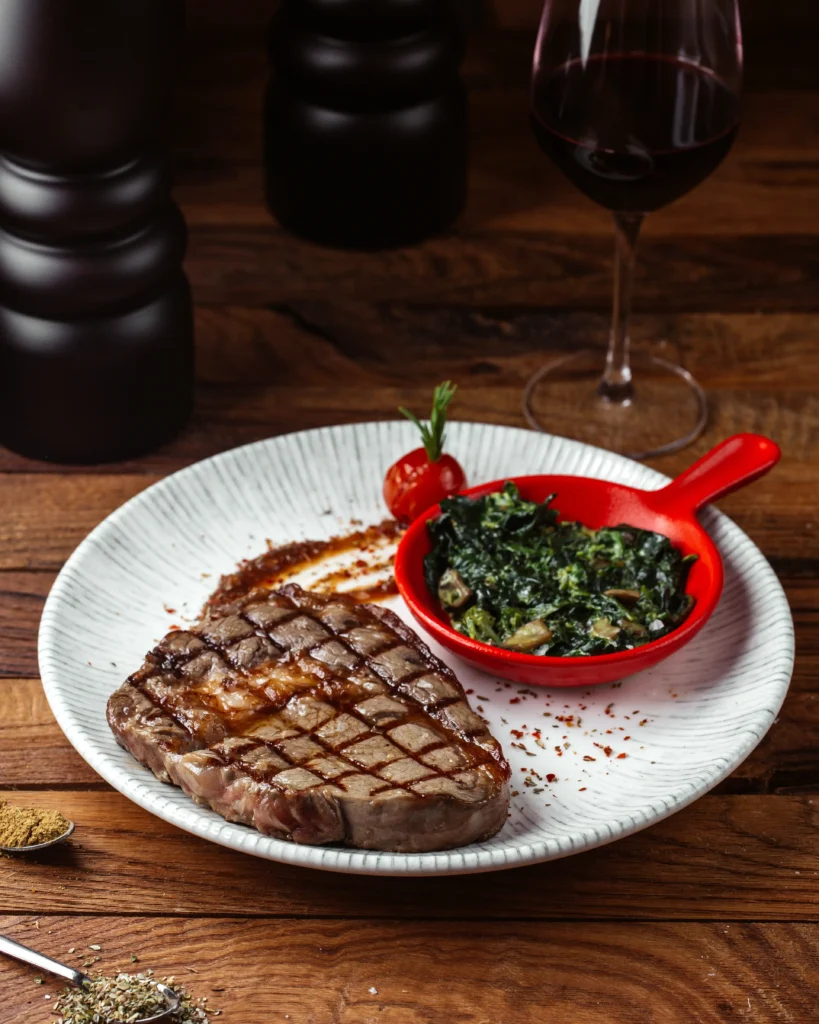
Few dishes are more iconic—or more fiercely beloved—than Bistecca alla Fiorentina. This is not just a steak. It’s a ritual. A celebration of meat. A carnivore’s dream come true.
Made from the prized Chianina breed of cattle, which is native to Tuscany and one of the oldest and largest breeds in the world, the Bistecca alla Fiorentina is a T-bone cut that’s absolutely massive—often weighing in at over a kilo (more than two pounds!). It’s grilled over a wood or charcoal fire, seasoned simply with salt, maybe a touch of pepper, and a drizzle of extra virgin olive oil. That’s it. No marinades, no fancy sauces. Just pure, honest beef cooked to perfection.
Traditionally, it’s served rare—and Tuscans are pretty adamant about this. The inside stays tender and pink, while the outside develops a smoky, caramelized crust that adds depth without overpowering the meat’s natural flavor. It’s usually carved tableside and served family-style, making it a true centerpiece for a shared feast.
Pair it with a glass of bold Chianti or Brunello di Montalcino, and you have a meal that’s as Tuscan as it gets. It’s primal, indulgent, and profoundly satisfying—proof that when you have the right ingredients and respect the process, simplicity wins.
Pappa al Pomodoro – Comfort in a Bowl
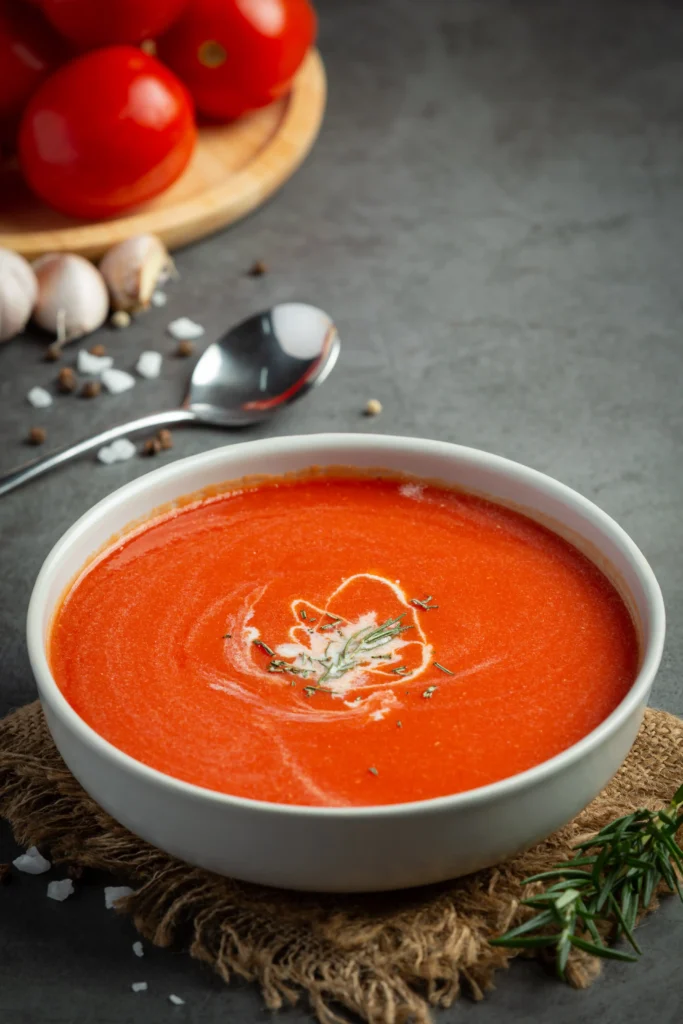
If ribollita is Tuscany’s winter soup, pappa al pomodoro is its sunny summer cousin. This tomato and bread soup is a staple in Tuscan households and a delicious way to use up day-old bread and ripe tomatoes. Like many Tuscan dishes, its brilliance lies in its simplicity.
The base of the dish is a fresh tomato sauce made with garlic, olive oil, basil, and sometimes a bit of onion. Cubes or torn pieces of stale Tuscan bread—firm, saltless, and perfect for soaking up flavor—are added directly into the pot, absorbing the rich tomato juices and turning into a thick, spoonable porridge. It’s a dish that doesn’t pretend to be fancy, but when done well, it delivers bright, bold flavor with every bite.
You’ll often find pappa al pomodoro served warm in the cooler months or chilled during the summer, sometimes topped with a drizzle of high-quality olive oil or a few fresh basil leaves. It’s rustic, hearty, and incredibly satisfying. And because it uses just a handful of ingredients, every element must be the best you can find—especially the tomatoes and the oil.
This dish is a beautiful example of the Tuscan mindset: nothing goes to waste, and flavor comes from respecting the natural goodness of ingredients. It’s also one of the first dishes many Tuscan children learn to cook—proof that comfort food starts early in this region.
Cacciucco – The Fisherman’s Stew of the Tuscan Coast
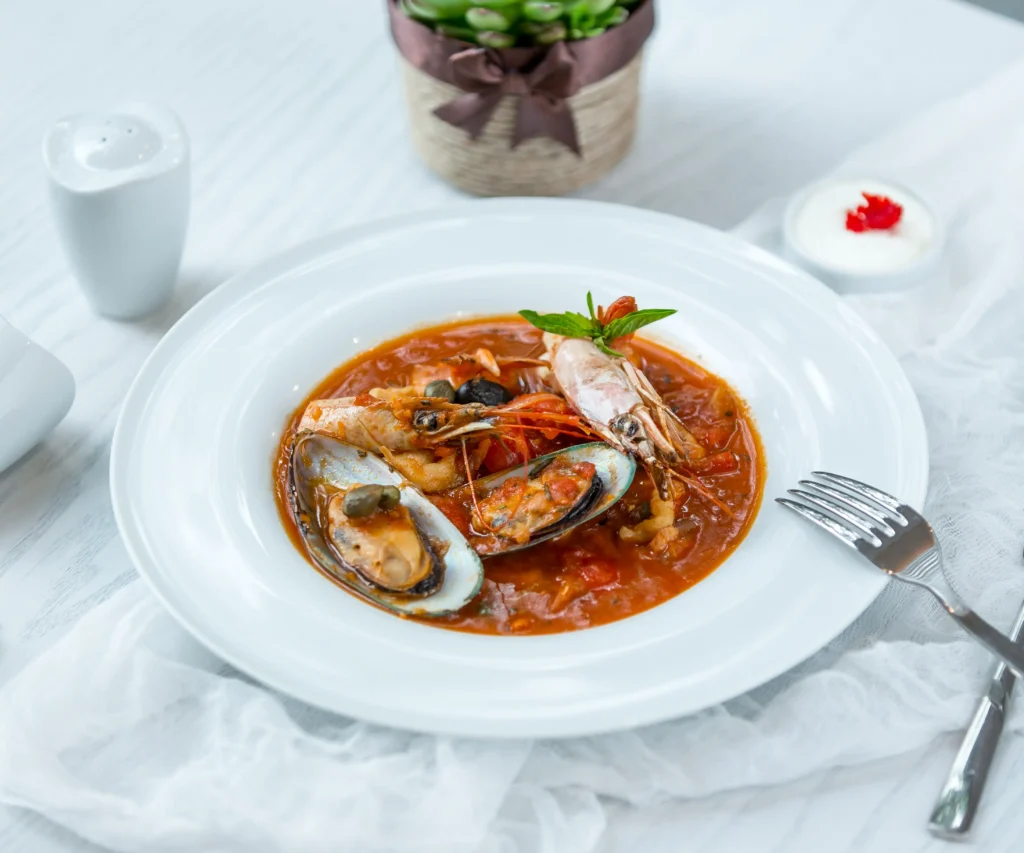
Travel to the Tuscan coast, and you’ll discover an entirely different side of the region’s cuisine—one that celebrates the bounty of the sea. And at the heart of it all is Cacciucco, a bold, spicy seafood stew that hails from the port cities of Livorno and Viareggio.
Cacciucco is made with a variety of fish and shellfish—whatever is fresh and available from the day’s catch. Common ingredients include squid, octopus, mussels, clams, and different types of white fish. The seafood is cooked in a rich tomato base infused with garlic, red pepper flakes, and a generous splash of red wine, often Chianti. It’s then ladled over thick slices of toasted bread that have been rubbed with raw garlic—yes, it’s as punchy as it sounds.
This dish is the Mediterranean in a bowl: briny, robust, and deeply satisfying. It’s said that true cacciucco should include five types of seafood, one for each “C” in the word. Whether or not you follow that rule, what matters most is using ultra-fresh seafood and cooking it gently to preserve its delicate texture.
Cacciucco isn’t a refined, elegant dish—it’s a working-class meal born from necessity, like many Tuscan classics. But it’s incredibly rich in flavor and tradition, and it offers a taste of Tuscany that’s as deep and complex as the waters off its coast.
Exploring Tuscan Pasta & Bread Traditions
Pici – The Hand-Rolled Pasta of Siena
Imagine sitting in a cozy kitchen somewhere in the hills of Siena. There’s flour on the table, a rolling pin to one side, and a bowl of dough that someone’s grandmother is turning into pici—a thick, hand-rolled pasta that’s as fun to eat as it is to make. This traditional Tuscan pasta is made without eggs, using just flour, water, and sometimes a bit of olive oil. The result? A dense, chewy noodle with a rustic charm that holds sauces like a dream.
What sets pici apart is how it’s made. Each strand is hand-rolled one at a time, often by the entire family during holidays or festivals. No two strands are exactly the same, and that’s part of the magic. It’s imperfect, personal, and packed with character—just like Tuscany itself.
The most classic preparation is pici all’aglione, where the pasta is tossed in a garlicky tomato sauce made with aglione, a large, mild-flavored garlic native to the Val di Chiana region. The sauce is light but punchy, letting the garlicky sweetness dance with the hearty noodles.
But you’ll also find pici served with rich meat ragù, porcini mushrooms, or simply with breadcrumbs toasted in olive oil (pici alle briciole), which adds a wonderful crunch to every bite. However it’s served, pici is a celebration of handmade tradition—each strand a testament to the love and patience that defines Tuscan home cooking.
Pappardelle al Cinghiale – Wild Boar Ragù with Wide Ribbon Pasta
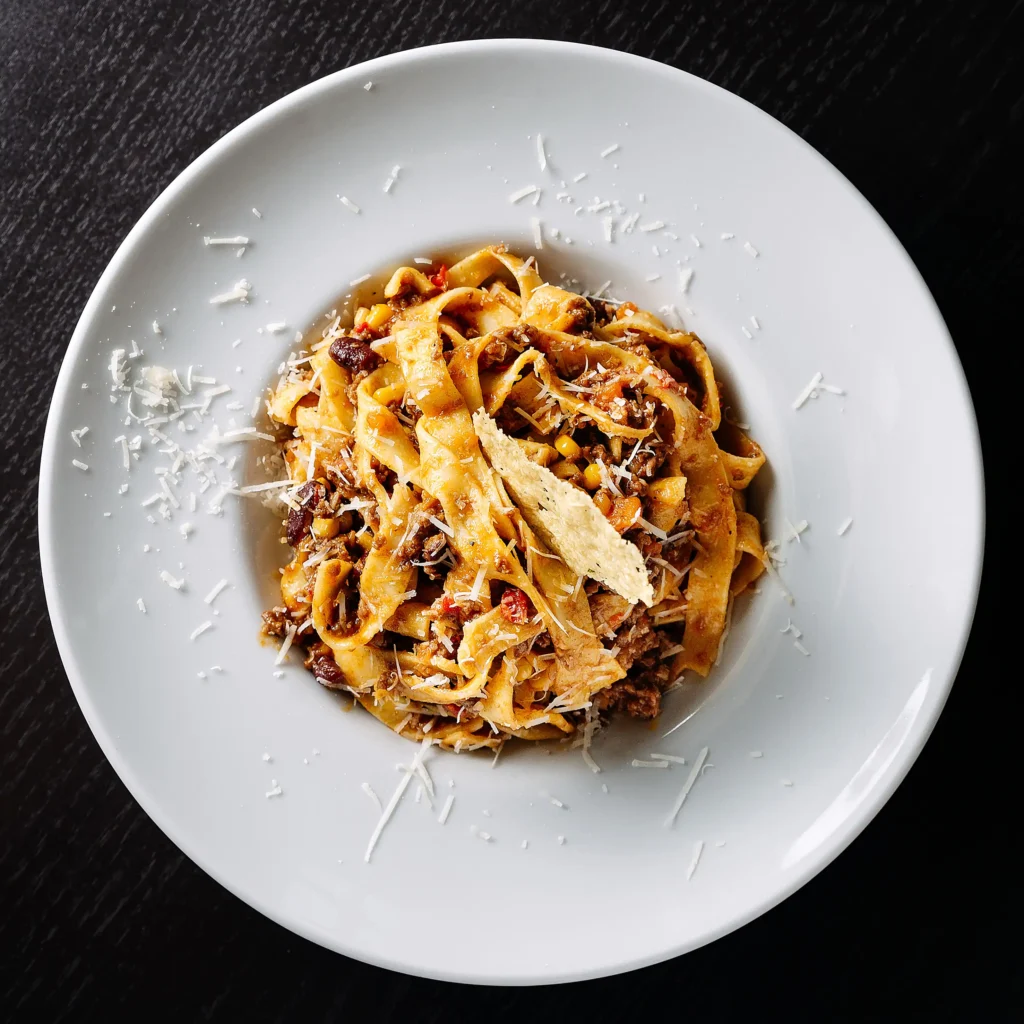
If Tuscany had a comfort food hall of fame, pappardelle al cinghiale would be a headliner. It’s the kind of dish that makes you stop mid-bite, close your eyes, and let out an audible “mmmmm.” Thick, wide ribbons of egg pasta—pappardelle—serve as the perfect stage for a rich, deeply flavorful ragù made from wild boar, or cinghiale.
Wild boar is a staple in Tuscan countryside cuisine, especially in the wooded regions like Maremma and Chianti where they roam freely. The meat is lean and slightly gamey, with a bold, earthy taste that reflects the landscape. It’s typically marinated in red wine, juniper berries, garlic, rosemary, and bay leaves to tame its intensity and infuse it with Tuscan aromatics.
Then, it’s slowly braised for hours until it becomes meltingly tender, and turned into a hearty sauce that clings to every strand of pappardelle. The texture of the wide pasta ribbons makes each bite luxurious, almost silky, and perfectly able to soak up every drop of the sauce.
This dish is often enjoyed in the colder months, served at rustic inns and festive family gatherings. It’s not just a meal—it’s an experience. It brings together the thrill of the hunt, the pride of slow cooking, and the satisfaction of a dish that feels both rustic and refined. Served with a robust glass of red wine, it’s Tuscany in its most soul-warming form.
Tuscan Bread (Pane Sciocco) – The Saltless Staple

At first bite, Tuscan bread might surprise you. It’s firm. It’s plain. And—most notably—it’s saltless. Yes, pane sciocco, the traditional Tuscan bread, is made without salt, which gives it a unique, almost neutral flavor that confuses some and comforts others. But once you understand the why, it starts to make a lot more sense.
Historically, this salt-free approach dates back to the Middle Ages, when salt was highly taxed and expensive. In response, Tuscans adapted by baking their daily bread without it. But what began as an economic necessity evolved into a defining feature of Tuscan cuisine.
Today, pane sciocco serves a very specific and valuable purpose: it’s the perfect vehicle for the bold, salty, and savory flavors that define Tuscan food. When you pair it with prosciutto, pecorino cheese, or rich soups like ribollita, the bread acts as a balancing canvas. Its mildness allows the stronger flavors to take center stage.
You’ll often see this bread toasted and topped with olive oil and tomatoes (bruschetta or fettunta), layered with meats and spreads for an antipasto platter, or used to thicken hearty soups and stews. It also keeps well, making it ideal for traditional recipes that use stale bread as a core ingredient—like panzanella (bread salad) or acquacotta (vegetable soup).
So yes, it may not be the type of bread you’d eat on its own, but in the context of Tuscan cuisine, it’s exactly what the table needs—modest, reliable, and quietly essential.
Tuscany’s Wine Legacy
Chianti Classico – The Bold Heart of Tuscany
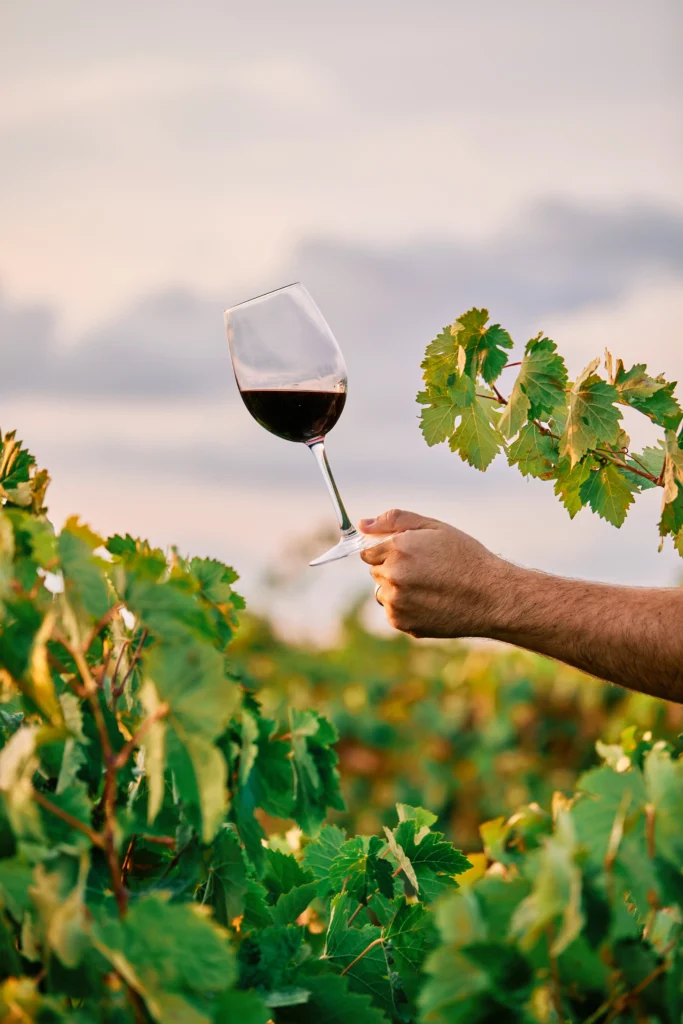
When people think of Tuscan wine, Chianti is often the first name that springs to mind—and for good reason. It’s one of Italy’s most iconic wines and an essential part of the region’s identity. But nestled within the broader Chianti region is the true jewel: Chianti Classico. This is the historic core of Chianti wine production, and it’s where the magic happens.
Chianti Classico is made primarily from the Sangiovese grape—an expressive, medium-bodied varietal that thrives in Tuscany’s sun-drenched hills. To earn the “Classico” label, the wine must contain at least 80% Sangiovese, though many winemakers use 100% to showcase its true character.
What does it taste like? Think cherries—bright, tart, and slightly earthy—layered with hints of dried herbs, leather, and a touch of spice. It has a good amount of acidity, which makes it perfect for pairing with food, especially tomato-based dishes like pici all’aglione or meat ragùs.
Chianti Classico is also recognizable by its seal of authenticity: a black rooster (Gallo Nero) on the bottle’s neck. This centuries-old symbol represents the original Chianti League formed in the Middle Ages and is now a guarantee of quality.
But Chianti Classico is more than just a wine—it’s a landscape, a way of life. The region is dotted with medieval villages, ancient castles, and family-owned wineries passed down through generations. Touring these vineyards, tasting wines in the very cellars where they were born, offers a sensory connection to Tuscany’s soul. Whether you’re sipping a fresh, youthful vintage or a complex Riserva, Chianti Classico delivers a taste of tradition in every glass.
Brunello di Montalcino – The King of Sangiovese
If Chianti Classico is Tuscany’s heart, Brunello di Montalcino is its crown jewel. This prestigious wine hails from the hilltop town of Montalcino in southern Tuscany, where the Sangiovese grape reaches new heights of elegance and power.
Brunello is made using a specific clone of Sangiovese called Sangiovese Grosso (or Brunello), and it must be aged for a minimum of five years before release—two of which must be spent in oak barrels. That lengthy aging process results in a wine that is rich, structured, and built to age. In fact, some of the best Brunellos can continue evolving beautifully for decades.
On the palate, you’ll find flavors of black cherry, plum, dried figs, and tobacco, with earthy undertones and hints of leather and spice. It’s bold, but not aggressive—balanced by firm tannins and a deep, persistent finish. This is a wine meant to be savored slowly, preferably with a hearty meal or next to a roaring fire in a countryside villa.
Visiting Montalcino is an experience in itself. The town sits high above the valley, surrounded by a patchwork of vineyards and olive groves. Many of the wineries here are small, family-run estates where the same hands that tend the vines pour the wine. If you’re lucky enough to taste a Brunello at the source, looking out over the rolling hills where the grapes were grown—well, that’s a kind of magic no sommelier can replicate.
Vino Nobile di Montepulciano – The Noble Wine
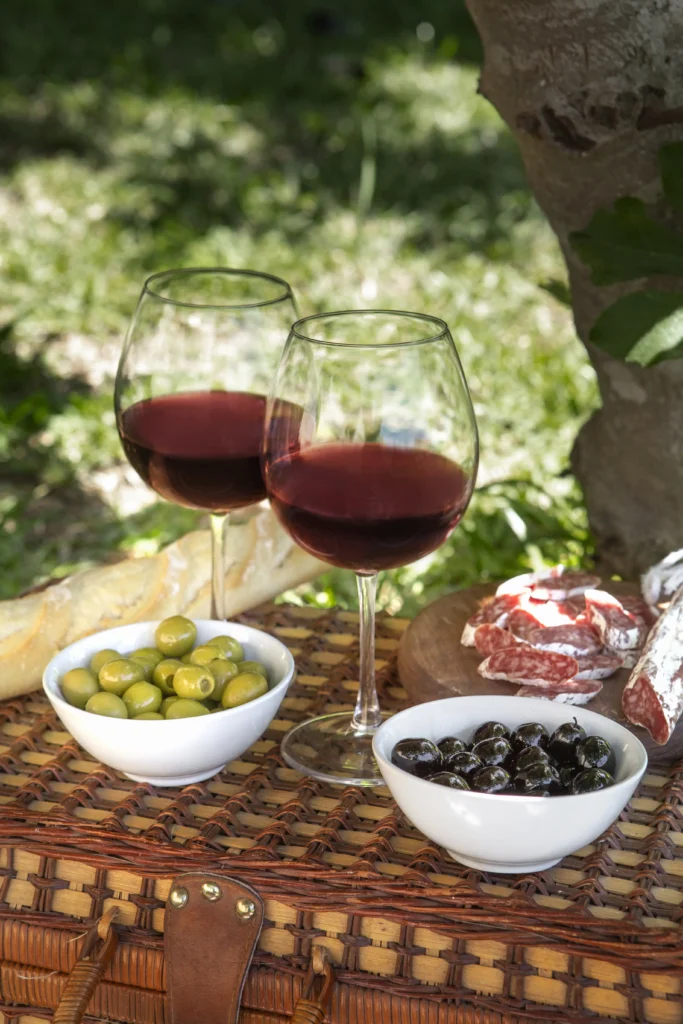
Often overshadowed by its more famous neighbors, Vino Nobile di Montepulciano is a hidden gem that deserves your full attention. Hailing from the Renaissance hill town of Montepulciano (not to be confused with the Montepulciano grape from Abruzzo), this wine is made from a Sangiovese clone known locally as Prugnolo Gentile.
Vino Nobile is elegant and smooth, with flavors of ripe cherry, raspberry, violet, and subtle notes of oak and spice. It’s a bit softer than Brunello but still offers impressive structure and aging potential. Legally, it must be aged for at least two years (three for Riserva) and contains a minimum of 70% Sangiovese.
The phrase “nobile” (noble) isn’t just for show. In centuries past, this was the wine of Tuscan aristocracy—sipped in noble courts and prized by poets and popes alike. Today, it remains a refined, versatile wine that pairs beautifully with a range of Tuscan dishes, from game meats to aged cheeses.
Montepulciano itself is a fairytale town—cobblestone streets, ancient palazzi, and panoramic views stretching all the way to Lake Trasimeno. Many of the wine cellars are carved right into the rock beneath Renaissance-era buildings, adding a historic thrill to every tasting. Touring the underground barrel rooms and emerging into a sunlit piazza with a glass of Vino Nobile in hand? That’s the Tuscan dream.
Super Tuscans – Breaking the Rules, Making New Legends
Not all Tuscan wines play by the old rules. Enter the Super Tuscans—a rebellious, exciting category of wines that emerged in the 1970s when a handful of bold winemakers decided to throw tradition (and DOC regulations) to the wind.
These wines often blend Sangiovese with international varieties like Cabernet Sauvignon, Merlot, or Syrah—grapes that were once forbidden under traditional classification rules. By aging them in French oak barrels and using modern techniques, these winemakers created powerful, full-bodied wines that quickly gained international acclaim.
Some of the most famous Super Tuscans—like Sassicaia, Tignanello, and Ornellaia—have become cult favorites, fetching high prices and dazzling critics. What unites them is not a specific grape or aging requirement, but a commitment to quality and innovation.
Tasting Super Tuscans is a wild ride. You might experience the bold structure of Bordeaux with the soul of Tuscany—a rich, velvety mouthfeel layered with dark fruits, spice, tobacco, and a silky finish. These wines pair wonderfully with grilled meats, truffle dishes, or simply a long sunset on a terrace overlooking the vineyards.
So, while Tuscany is steeped in tradition, it’s also a place where winemakers aren’t afraid to push boundaries. Super Tuscans prove that sometimes, breaking the rules leads to the greatest rewards.
Indulging in Tuscan Sweets and Desserts
Cantucci & Vin Santo – The Classic Crunch-and-Dip Combo
No Tuscan meal is truly complete without the grand finale: a small plate of crunchy cantucci (also known as biscotti di Prato) served alongside a glass of Vin Santo. These small, golden almond cookies are twice-baked, giving them that signature firm texture that practically begs to be dipped.
But here’s the trick—don’t bite into a cantuccio dry unless you’re after a serious jaw workout. Instead, do it like the locals: dunk it into Vin Santo, Tuscany’s golden-hued dessert wine. The cookie soaks up the wine’s warm, nutty sweetness, transforming from crisp to luscious in just a few seconds. It’s the ultimate blend of texture and taste—crunchy and tender, sweet and slightly bitter.
Vin Santo itself is fascinating. It’s traditionally made from white grapes like Trebbiano and Malvasia, which are harvested late and then dried on straw mats for months to concentrate the sugars. The resulting wine is aged for years in small barrels, often in attic spaces where temperature changes help develop complex flavors—think dried apricot, honey, hazelnut, and caramel.
Together, cantucci and Vin Santo aren’t just dessert—they’re a ritual. They symbolize warmth, hospitality, and the Tuscan talent for turning simplicity into something unforgettable. You’ll find them everywhere from rural trattorias to Michelin-starred restaurants, and they never fail to deliver that perfect, heartwarming endnote.
Castagnaccio – Chestnut Cake with a Rustic Soul
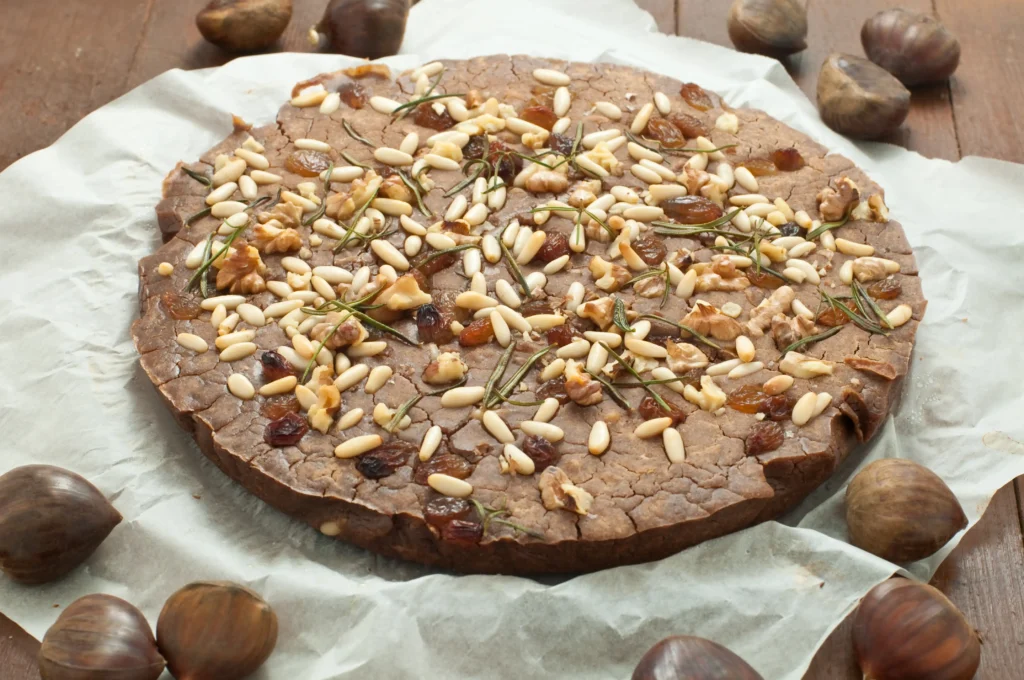
Forget frosted cakes and cream-filled confections—Castagnaccio is a different kind of dessert. Humble, earthy, and deeply rooted in Tuscan tradition, this chestnut flour cake is a window into the region’s peasant past.
Made with just a few ingredients—chestnut flour, water, olive oil, rosemary, pine nuts, and raisins—Castagnaccio is a dense, moist cake that carries the rich, slightly sweet flavor of roasted chestnuts. There’s no sugar added (aside from the natural sweetness of the flour and raisins), and no leavening agents, making it more of a snack or a savory treat than a sugary dessert.
Its origins go back to the days when chestnuts were a crucial food source in rural Tuscany, especially in mountainous areas where wheat was scarce. Castagnaccio was often eaten during the fall and winter, after the chestnut harvest, and was typically paired with a glass of new wine or even Vin Santo.
The rosemary and olive oil give it an aromatic, almost savory edge, while the raisins and pine nuts add a pop of sweetness and texture. It’s a love-it-or-leave-it kind of dish for some, but for those who appreciate a dessert with character and history, Castagnaccio is an authentic Tuscan gem.
Schiacciata alla Fiorentina – Carnival’s Light and Fluffy Favorite
Bright yellow, dusted with powdered sugar, and often stamped with a cocoa fleur-de-lis—the symbol of Florence—Schiacciata alla Fiorentina is the celebratory cake of the Tuscan Carnival season. Unlike the savory schiacciata (flatbread), this version is a sweet, airy sponge cake bursting with citrusy flavor and festive flair.
Made with eggs, flour, sugar, and orange zest, this cake is delightfully soft and springy, with a lightness that makes it dangerously easy to eat slice after slice. Sometimes it’s filled with whipped cream or custard, though many prefer the original version, simply sliced and served with a dusting of sugar.
What makes it unique—aside from its bright color and seasonal appearance—is the texture. It’s not as rich as a pound cake or as delicate as a sponge, but floats somewhere in between, making it a perfect afternoon snack with a cappuccino or a gentle ending to a heavier meal.
During Carnival, you’ll see these cakes lining the bakery shelves in Florence, marked with the giglio (lily) emblem or festive designs. Some versions even get a playful twist with chocolate chips or citrus glaze. But at its core, Schiacciata alla Fiorentina is about tradition, joy, and that distinct Tuscan ability to make even a simple cake feel like a celebration.
Experiencing Tuscan Markets and Food Festivals
Local Markets – A Feast for the Senses
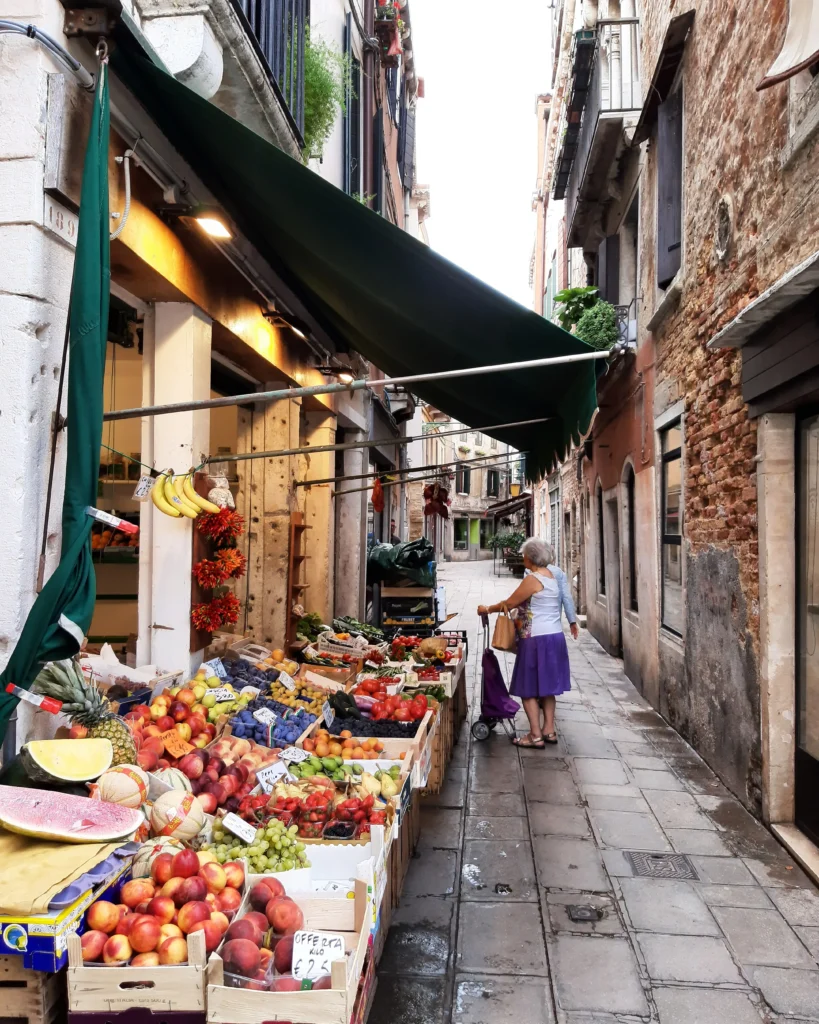
There’s nothing quite like a Tuscan market. Whether you’re in a bustling piazza in Florence or a sleepy village square in the Chianti hills, local markets are where the rhythm of everyday life plays out in full color, scent, and flavor.
These aren’t just places to pick up ingredients—they’re social hubs, storytelling venues, and cultural landmarks. The produce is seasonal and hyperlocal. One week you’ll see crates of wild mushrooms or piles of freshly foraged truffles, and the next, bundles of cavolo nero (Tuscan kale), bright red pomodori, or fragrant bunches of herbs like rosemary, sage, and wild fennel.
And it’s not just fruits and veggies. Artisanal cheese stalls overflow with Pecorino Toscano, often offered with a smile and a free taste. Butchers showcase regional specialties like finocchiona (fennel salami) and lardo di Colonnata, which melts like butter on warm bread. You might pass a stall selling still-warm loaves of rustic bread, or a vendor slicing prosciutto so thin it’s almost translucent.
What really makes these markets magical, though, is the people. Elderly nonnas bartering with the same vendors they’ve known for decades, chefs sourcing ingredients for tonight’s menu, and curious travelers absorbing it all like kids in a candy store. There’s a rhythm to it—a back-and-forth banter, a sensory overload, a connection to the land and its traditions. And if you’re lucky, you might stumble upon a vendor offering porchetta panini or roasted chestnuts to enjoy as you wander.
Some of the most iconic markets to explore include:
- Mercato Centrale in Florence – a food lover’s paradise with traditional stalls downstairs and gourmet eateries upstairs.
- Siena’s weekly market – massive and authentic, great for local specialties.
- San Miniato truffle market – held in autumn, when the white truffles are in season.
Sagre – The Heartbeat of Tuscan Food Culture
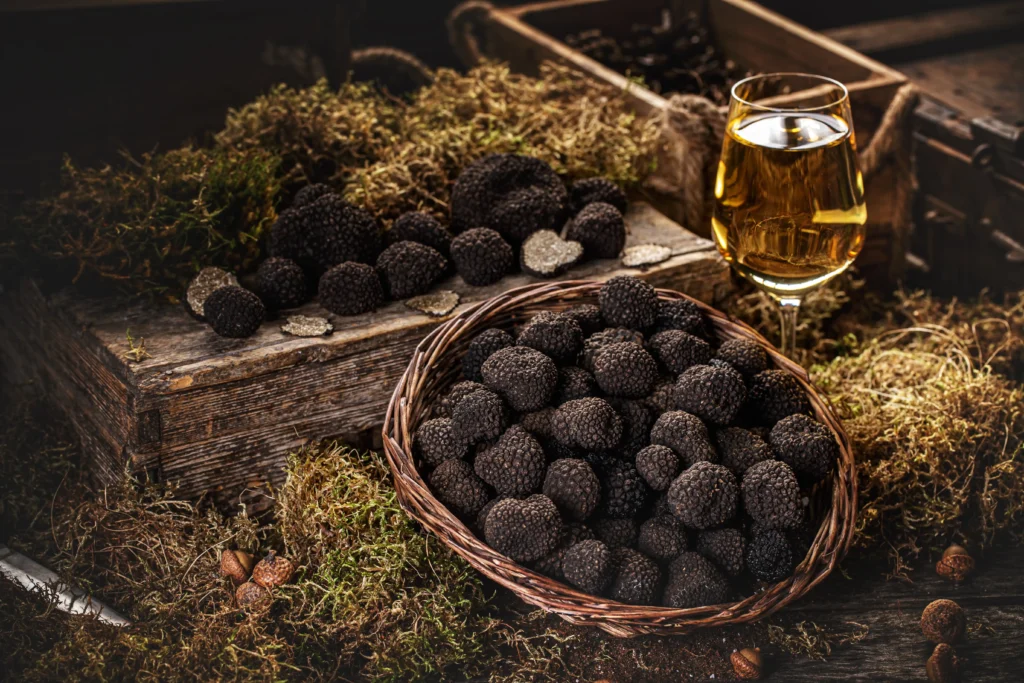
If you want to experience Tuscany like a local, skip the fancy restaurants for a night and head to a sagra. These seasonal food festivals are dedicated to celebrating a single ingredient or dish, usually tied to the local harvest calendar.
Sagre are community-run, often hosted by small towns or neighborhoods, and they bring everyone together—grandparents, teens, tourists, and toddlers. You’ll find long communal tables, paper plates stacked high with regional favorites, and plenty of local wine served in no-nonsense tumblers. The atmosphere is joyful, relaxed, and deeply authentic.
Each sagra has its own culinary theme. Some of the most beloved include:
- Sagra del Tartufo (Truffle Festival) – Towns like San Miniato host elaborate fairs featuring white and black truffles, with truffle-laden dishes from pasta to bruschetta.
- Sagra della Bistecca (Steak Festival) – Towns like Cortona grill up massive bistecche alla fiorentina outdoors over open flames.
- Sagra della Castagna (Chestnut Festival) – Held in mountain villages like Marradi in autumn, celebrating chestnut season with roasted nuts, necci (chestnut crepes), and castagnaccio.
- Festa dell’Olio Nuovo (New Olive Oil Festival) – Celebrated in places like Impruneta and Reggello in late autumn when the season’s first olive oil is pressed. The vibrant green olio nuovo is drizzled over everything from bread to soup.
At a sagra, the food is only part of the fun. There’s usually live music, folk dancing, parades, and kids playing in the piazza while the grown-ups chat over a carafe of vino della casa. It’s a full-body immersion into Tuscany’s food culture—alive, unpretentious, and wonderfully flavorful.
Truffle Hunts and Olive Harvests – Participatory Food Experiences
If you really want to go beyond tasting and start living the Tuscan culinary experience, consider joining a seasonal food adventure like a truffle hunt or an olive harvest.
Truffle hunting, especially in autumn and winter, is one of the most unique activities you can do. Guided by expert tartufai and their trained dogs, you’ll trek through forests near towns like San Miniato, searching for elusive white and black truffles buried beneath the soil. It’s not just a walk in the woods—it’s a treasure hunt. Once found, the truffles are often prepared right on the spot, perhaps shaved over fresh pasta or eggs. It doesn’t get fresher than that.
The olive harvest, usually in October and November, is another hands-on opportunity. Many agriturismi and small farms welcome guests to help with the picking. It’s hard work but immensely rewarding. After the olives are gathered, you can witness the pressing process and taste olio nuovo—a brilliant green, peppery, robust olive oil that’s utterly unlike anything bottled in a supermarket.
These experiences give you a true appreciation for the labor, tradition, and passion behind every bite of Tuscan food. You’ll go home with more than just memories—you’ll take with you a connection to the land and its stories, and maybe even a few jars of oil or a truffle souvenir.
Pairing Food and Wine – A Harmonious Tuscan Tradition
Understanding Tuscan Wine – More Than Just Chianti
When people think of Tuscan wine, their minds usually go straight to Chianti—and sure, Chianti is iconic—but Tuscany’s wine culture is a whole universe of its own, full of variety, heritage, and even a few surprises.
Let’s start with the heavy-hitters. Chianti Classico, produced between Florence and Siena, is made primarily from the Sangiovese grape and is known for its bold cherry notes, earthy undertones, and that lovely acidity that makes it a dream to pair with food. But then there’s Brunello di Montalcino, a powerful red made from 100% Sangiovese grown around the hilltop town of Montalcino. It’s aged for years and commands serious respect in the wine world for its complexity and aging potential.
Now swing over to Vino Nobile di Montepulciano, another Sangiovese-based red, this one with a softer, more elegant character, hailing from the charming town of Montepulciano. And don’t forget the Super Tuscans—rebellious blends that broke free from traditional DOC regulations. Often combining international grapes like Cabernet Sauvignon and Merlot with Sangiovese, these wines (like Sassicaia and Tignanello) helped put Tuscany on the global wine map in the 20th century.
And we haven’t even touched the whites. Vernaccia di San Gimignano is a crisp, minerally white with ancient roots, grown in the hilltop town of San Gimignano. Perfect with seafood or light pastas, it’s one of Tuscany’s rare white DOCG wines.
Tuscany’s terroir—its mix of sunny slopes, clay-limestone soils, and coastal breezes—gives its wines their depth and personality. Whether you’re sipping a rustic table wine at a trattoria or swirling a glass of reserve Brunello in a candlelit osteria, Tuscan wine always tells a story—about the land, the people, and the passion in every bottle.
How Tuscans Pair Food and Wine Like a Fine Art
In Tuscany, pairing food and wine isn’t about snobbery—it’s about harmony. Wine isn’t treated like a trophy; it’s a co-star, meant to enhance the meal, not dominate it. And locals are masters at this balancing act.
Start with antipasti: a glass of light, dry white like Vernaccia goes beautifully with marinated vegetables, cured meats, and crostini. For creamy cheeses, go with a young Chianti—its acidity cuts through the richness.
When it’s time for primi piatti—like pappardelle with wild boar or ribollita—bring out the medium-bodied reds. Chianti, Vino Nobile, or a Rosso di Montalcino all shine here, their structure and tannins matching well with hearty textures and flavors.
Secondi dishes like bistecca alla fiorentina deserve boldness. That’s when Brunello di Montalcino or an aged Chianti Riserva steps in. These wines stand up to grilled meats and roasts with confidence and finesse.
Seafood more your style? A coastal Vermentino pairs perfectly with seafood risottos, grilled octopus, or cacciucco (a Tuscan fish stew). It’s zesty, clean, and made for the Mediterranean palate.
And let’s not forget the end of the meal. Cantucci and Vin Santo, of course, are a match made in heaven. But dark chocolate desserts also sing when paired with a late-harvest red or even a splash of Tuscan grappa for those who like to end on a fiery note.
At the heart of it all is balance—matching acidity with fat, boldness with richness, delicacy with subtlety. It’s an intuitive skill that comes from centuries of tradition and a deep respect for ingredients. The best way to learn it? Sit at a Tuscan table and just taste.
Where to Go – Top Food and Wine Destinations in Tuscany
Florence – A Culinary Hub with Endless Possibilities
Florence is often the first stop for any Tuscany-bound traveler, and it’s no surprise why. While the city is known for its art, history, and architecture, Florence also has an impressive food scene that combines traditional Tuscan fare with innovative new dining concepts.
Start your culinary journey at the Mercato Centrale, a vibrant indoor market where you’ll find a mix of fresh produce, local meats, cheeses, and prepared foods. Upstairs, you can dine on a variety of Tuscan dishes—whether you’re in the mood for a hearty bowl of ribollita (a classic Tuscan soup) or a charcuterie platter paired with a glass of Chianti.
Florence is also home to a number of iconic eateries and culinary traditions. The famous Trattoria Sostanza is a must-visit for its signature butter chicken, while Osteria All’Antico Vinaio serves up some of the best sandwiches in town, stuffed with cured meats and cheeses, all wrapped in freshly baked Tuscan bread.
For an experience like no other, take a guided tour of the city’s enoteca scene. Florence boasts an array of wine bars where you can taste local wines, including rare bottles from small family vineyards. Don’t forget to explore the local gelato spots, where artisans craft gelato with the finest ingredients, creating silky smooth, flavorful delights.
Siena – Medieval Charm Meets Fine Dining
Just an hour south of Florence, Siena offers a more relaxed, medieval atmosphere where the food is just as spectacular. The town is renowned for its rustic, hearty dishes—perfect for those wanting to dig into the culinary traditions that have stood the test of time.
Siena’s Piazza del Campo is the heart of the city, surrounded by cafes and restaurants serving dishes like pici pasta (a thick, hand-rolled pasta) with wild boar ragu. Pair it with a glass of Vino Nobile di Montepulciano, a local red wine with smooth tannins and rich flavor. In Siena, food is all about deep, earthy flavors, and many of the best dishes are rooted in the region’s history.
For those seeking more hands-on experiences, consider booking a cooking class. Several local cooking schools offer classes where you can learn to make traditional Tuscan dishes like cantucci, ribollita, and crostini. The best part? You get to savor your creations with a glass of local wine in the charming ambiance of the Tuscan countryside.
Chianti – The Heart of Tuscany’s Wine Country
No trip to Tuscany would be complete without a visit to the Chianti region, home to the world-famous Chianti Classico wine. The rolling hills of Chianti are dotted with wineries and vineyards, each offering a unique experience for wine lovers.
Begin your journey in the town of Greve in Chianti, where you can visit the Chianti Wine Museum and take a tour of some of the oldest wineries in the region. Many of these wineries offer tastings paired with local cheeses, salami, and other Tuscan delicacies.
For a more immersive experience, take a wine tour that includes stops at vineyards and cellars, where you can learn about the history of Chianti and the art of winemaking. Don’t forget to stop for a traditional Tuscan meal, such as a plate of bistecca alla fiorentina, paired with a glass of robust Chianti Classico.
If you’re interested in something unique, visit Castellina in Chianti. This town offers a stunning panoramic view of the vineyards and is known for its antique wine cellars that have been preserved since the Middle Ages. You can also visit Badia a Passignano, a historic abbey surrounded by vineyards, offering an experience steeped in history, nature, and exquisite wines.
Montalcino – Brunello’s Hometown
If you’re a fan of Brunello di Montalcino, one of Italy’s most prestigious wines, a visit to Montalcino is an absolute must. Located about 35 miles south of Siena, this hilltop town is surrounded by vineyards that produce the legendary Brunello, made exclusively from Sangiovese grapes.
The Montalcino Wine Festival (held every year in May) is the perfect time to visit, as it celebrates the region’s rich winemaking tradition. During the festival, you can taste some of the finest Brunello wines and learn about the production process directly from the winemakers.
Montalcino is also home to historic sites like the Fortezza di Montalcino, a fortress offering panoramic views of the surrounding vineyards. After touring the town and tasting some local wine, treat yourself to a meal at one of the town’s many osterias—the perfect place to try local dishes like wild boar, pappardelle, or chianina beef.
Conclusion – Tuscany Awaits Your Culinary Adventure
Tuscany isn’t just a destination—it’s an experience for the senses. From the rich history embedded in every dish to the soil that nurtures the grapes, food and wine are woven into the very fabric of this beautiful region. Whether you’re savoring a simple plate of pasta al ragù in a small trattoria or enjoying a multi-course meal at a Michelin-starred restaurant, you’re not just eating—you’re connecting with centuries of tradition.
The warmth of Tuscan hospitality, combined with the region’s unparalleled natural beauty, makes it one of the world’s top food and wine destinations. So, grab your fork, raise a glass, and get ready to indulge in the flavors of Tuscany—the ultimate culinary paradise.
FAQs
- What is the best wine to try in Tuscany? The best wine depends on your taste, but you can’t go wrong with Chianti Classico for a classic Tuscan red, or Brunello di Montalcino for something more refined. Vernaccia di San Gimignano is also an excellent choice for white wine lovers.
- Where can I take a cooking class in Tuscany? There are many opportunities to take cooking classes in towns like Florence, Siena, and Chianti. Some great places to start include Tuscan Women Cook in Florence and Cooking in Tuscany near Siena.
- What’s the best time to visit Tuscany for food and wine? The best times to visit Tuscany are in the spring (April-June) or autumn (September-November). These months offer pleasant weather and coincide with the harvest season, when you can enjoy fresh produce, truffles, and the grape harvest.
- How long should I spend in Tuscany for a food and wine tour? A week is ideal to explore Tuscany’s main culinary regions. You can visit Florence, Siena, Chianti, and Montalcino, all while taking in the sights and indulging in local foods and wines.
- What is a sagra? A sagra is a traditional food festival celebrating local dishes or ingredients. They are often held in small towns throughout Tuscany, particularly in the autumn, and offer a chance to taste regional specialties while enjoying music, dancing, and the company of locals.


